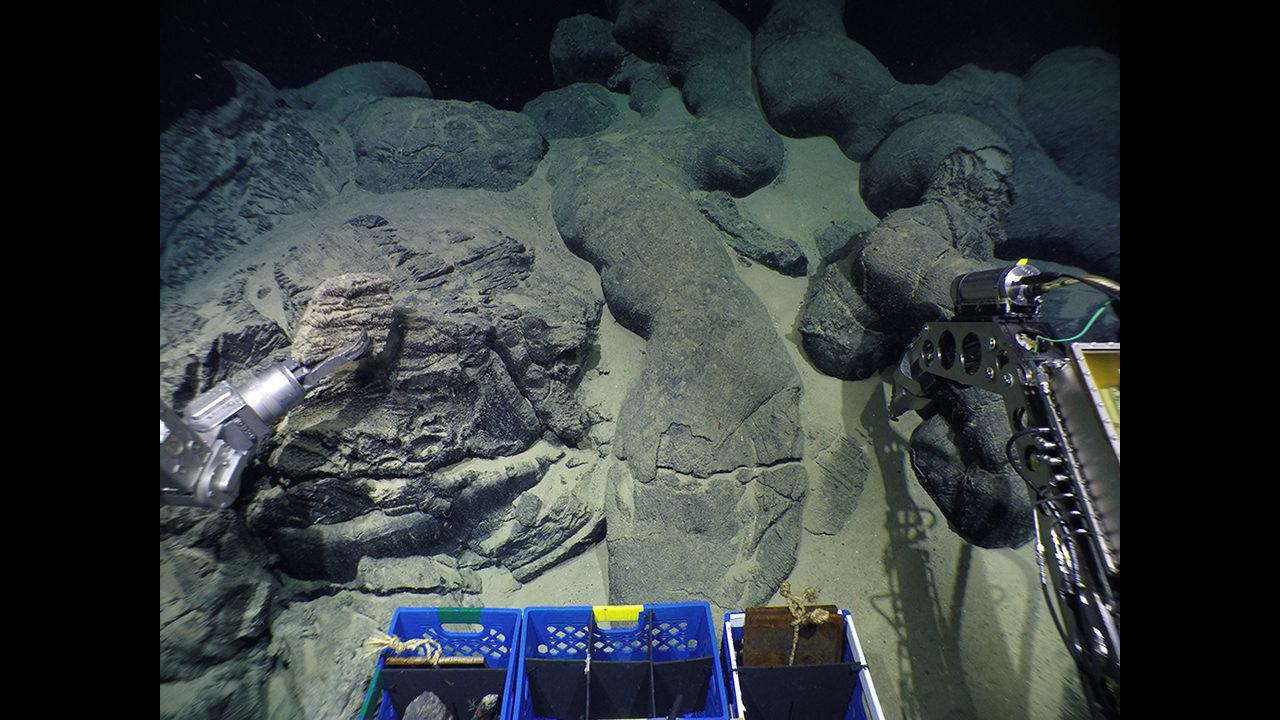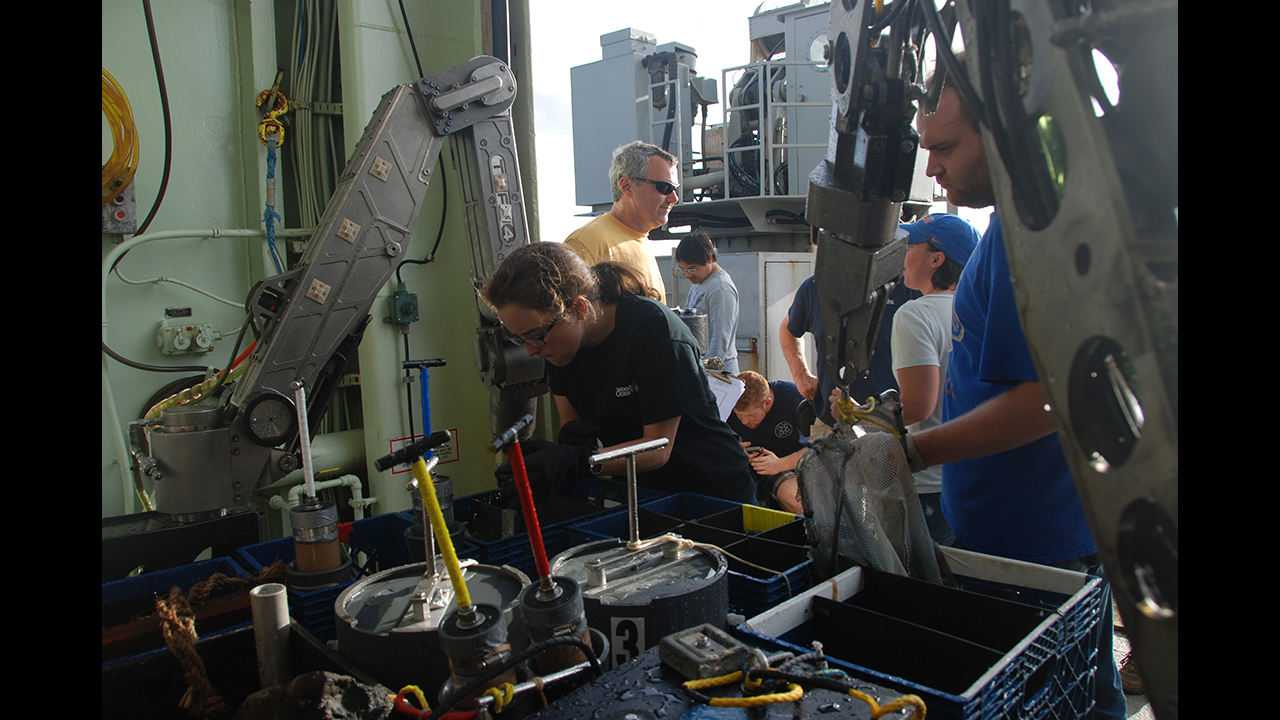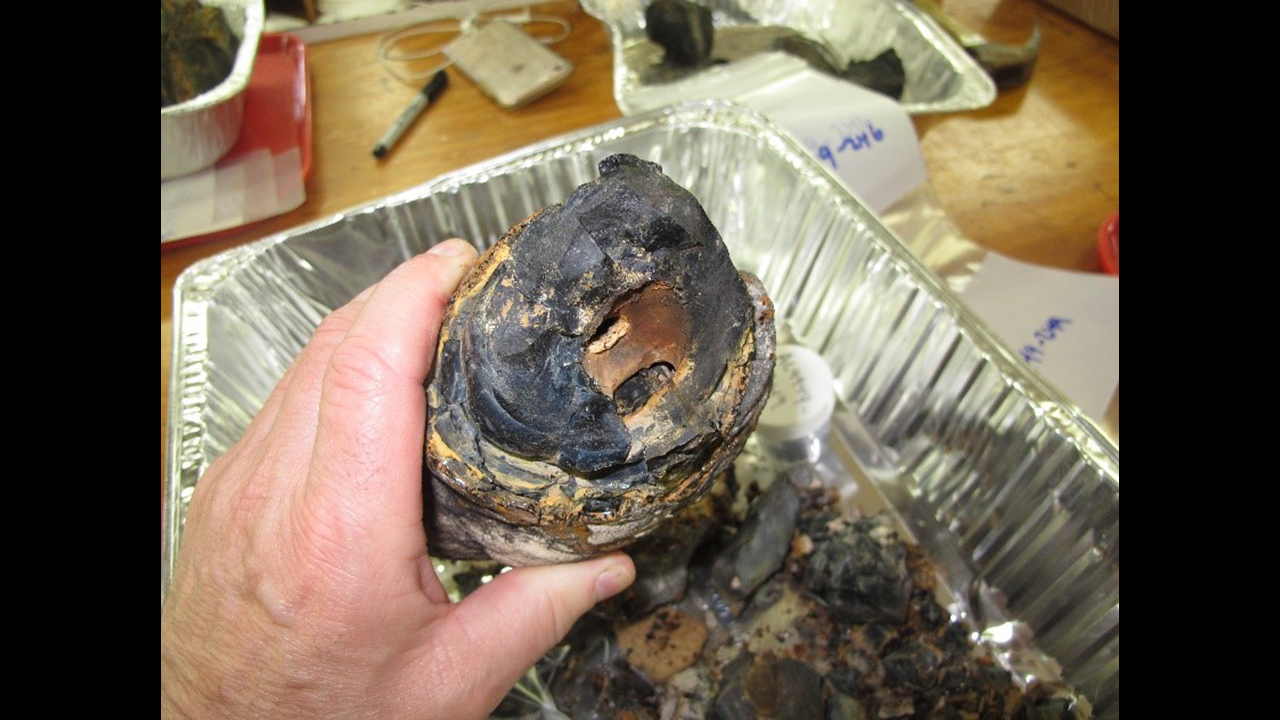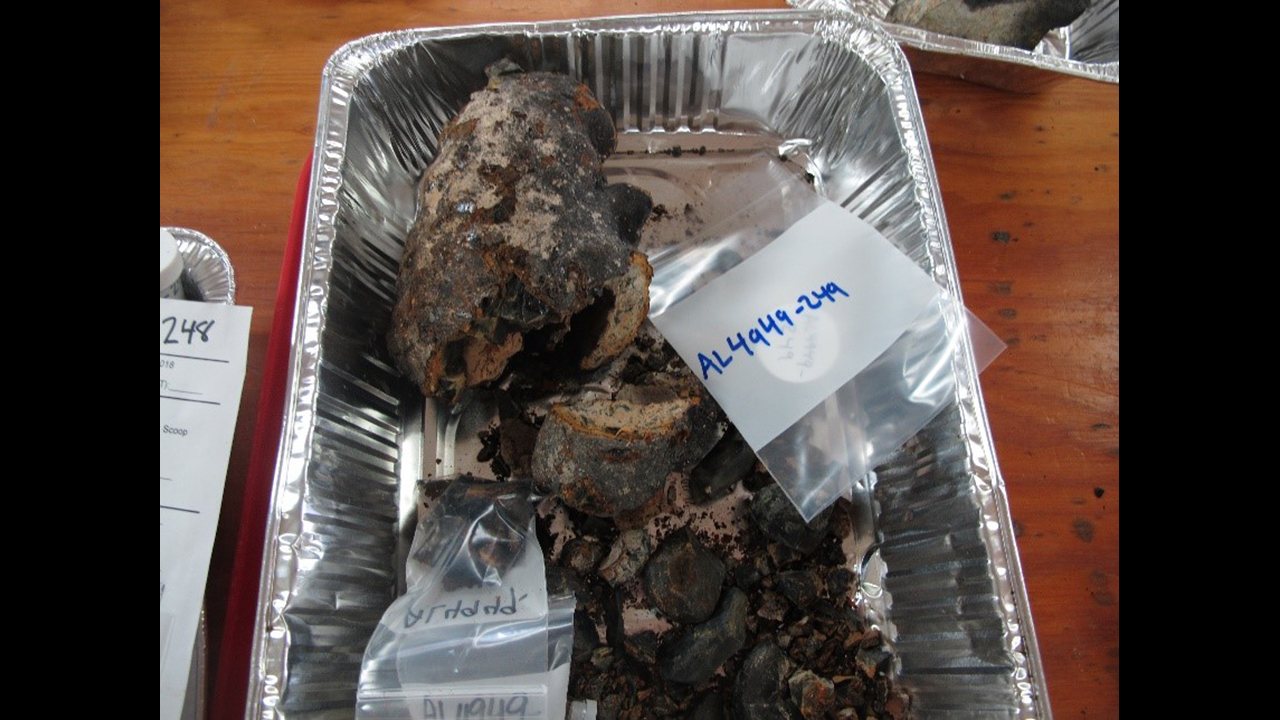



From collection to processed sample, deep sea rocks go through quite a lot. Because these samples are difficult to obtain, we take utmost care to make sure they remain as pristine as possible. Furthermore, we can’t go back down to get another piece of the same rock, so our team follows a series of checks to ensure that the same label follows the sample everywhere it goes. You could say these samples get the “Rock Star” treatment.
From the Ocean to the Ship: Finding our talent
The first step in this processing adventure begins when Alvin returns to Atlantis. The pilot has already placed each rock in its own individual box on Alvin’s science basket, located on the front of the submarine. Once on deck, a member of the science crew rinses the samples with fresh water and places them in individual buckets, then a series of people photographs, weighs, cuts, and sets them to dry overnight.
Pre-Processing: Movie-star glam shots
Pre-processing is the stage in which these rocks become the star of the show. The rock processing team begins by making index cards and labels with identifying information for each sample. Next, the team lays out a size scale, color bars, and sample numbers on top of a large sheet of white paper beneath the camera. Finally, the team takes a series of photographs of each rock to capture details of a sample’s shape, size, and color.
Chipping and Cutting: The A-list treatment
These rocks have a lot to tell us. To see what each rock is made of, the rock team takes a hammer and chisel, and begins to chip away the glassy material on the outer shell of a rock; and later analysis of this glass will reveal the chemical makeup of each rock. We then shave chunks off to make slabs for all the researchers out there who are destined to become fans of a particular rock. Finally, the team places the finished products out to dry—only the best spa treatment for these A-listers!
Sample Description: Celebrity Profiles
All the top stars have a fan page, and these rocks are no different. The rock team fills out a description page for each sample with its physical appearance. This step begins by bringing the dry samples back to the main lab and prepping them for another photoshoot. The rock team then takes each of the cut samples in turn and notes its size, color and any exterior and the interior characteristics and records these on the rock profiles and on a spreadsheet.
Bagging and Tagging: Hollywood, here I come!
Now that our samples have their profiles and glam shots, the rock team begins to bag and store each sample for future study. The first step in this process is to make sure the description sheet and sample bag are correct. This ensures that the right samples go to the right place. Each sample goes into a bag with its corresponding identification and then into containers that will travel to various institutions for future study. Finally, the rest of the bulk rock sample goes into a special box to be stored in a repository at the Woods Hole Oceanographic Institution. The team double-checks all the labeling and then places the containers in a storeroom for safe keeping. After all, only rock stars get this kind of treatment!



